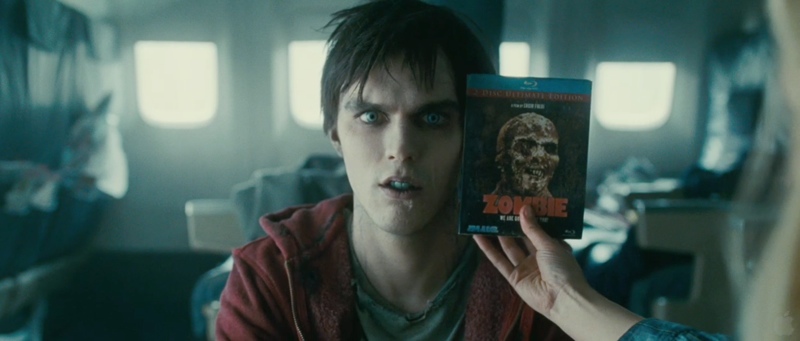1963 // USA // Roger Corman // January 14, 2013 // DVD - MGM (2003)
Based On: The Case of Charles Dexter Ward (1941)
[Note: This post contains spoilers. Part of a series on film adaptations of the works of H. P. Lovecraft.]
In 1963, the revelation that the first cinematic adaptation of H. P. Lovecraft’s work would be an American International Pictures production was probably not greeted with enthusiasm among devotees of the author’s distinctive stripe of Weird Fiction. Set aside for the moment the still-simmering question of whether Lovecraft’s particular brand of cerebral, cosmic horror can be successfully translated to film at all. AIP’s output at that time did not suggest a studio that was capable of (or all that interested in) the cinematic equivalent of the author’s fussy, vividly descriptive prose. James H. Nicholson and Samuel Z. Arkoff, the founders and executive producers at AIP, had developed a simple formula for cranking out low-budget features that generated robust ticket sales: they made the kind of movies that teenaged boys wanted to see. By 1963, the company was accordingly known for its “wild youth” pictures featuring hot rods and untamable coeds (Reform School Girl, Daddy-O), its grim yet cheesy science-fiction and horror features (It Conquered the World, The Amazing Colossal Man), and the occasional gestalt of those two currents (I Was a Teenage Werewolf). (The company also produced, improbably enough, La Dolce Vita). In other words, aficionados of verbose, obscure Jazz Age sci-fi magazine authors were not generally in AIP’s target audience.
That said, films based on works of American horror literature were not completely outside AIP’s wheelhouse. In 1963, the company was in the middle of its highly successful “Corman-Poe Cycle,” a series of exceedingly loose Edgar Allan Poe adaptations helmed by AIP fixture Roger Corman and starring (with one exception) the lusciously menacing Vincent Price. The Haunted Palace was the sixth film in this cycle, and it has the dubious distinction of not being an actual Poe adaptation at all. (The author’s 1839 poem provides the title and the tacked-on closing lines, but that’s it.) The film is, in fact, the first feature film based on one of Lovecraft’s works; specifically, his masterful novella The Case of Charles Dexter Ward, penned in 1927 but not published until 1941, four years after the writer’s death.
The Haunted Palace is the thinnest sort of adaptation, drawing little from Lovecraft’s tale other than the rough outline of its scenario, the names of the principal characters, and a memorable detail here and there. (Compared to some of the other films in the Corman-Poe Cycle, however, it’s positively reverential.) The film opens with a prologue set in the fog-shrouded New England village of Arkham, in what one can reasonably deduce to be the late eighteenth century. The menfolk of the village have just reached the point where their outrage over the nefarious deeds of wealthy eccentric Joseph Curwen (Price) has overtaken their fear of the man. The suspected necromancer has been making a habit out of magically luring Arkham’s lovely maidens to his palace at night, to do Devil only knows what to their minds and flesh. Gathered at the local tavern, the villagers are spurred to action by the sight of yet another victim (Darlene Lucht) shuffling through the gloom towards the wizard’s estate. Led by the hotheaded Ezra Weedan (Leo Gordon) and the considerably more perturbed Micah Smith (Elisha Cook, Jr.), the residents of Arkham take up pitchfork and flame in order to confront Curwen on his own doorstep. Unconvinced by his flimsy explanations for all the recent virgin-enchantment and grave-robbing, the mob ties Curwen to a tree and sets him aflame. In his final moments, the doomed sorcerer speaks a dreadful curse, declaring that the descendents of his executioners will suffer for all time.
The film then jumps ahead one hundred and ten years, as Charles Dexter Ward (Price again) and his wife Anne (Debra Paget) arrive in an Arkham that seems not to have changed one jot since the time of Curwen’s unholy trespasses. As it happens, Ward is the wizard’s descendent, and has recently come into possession of Curwen Palace. The superstitious villagers—who, like Ward, bear a startling resemblance to their 1700s forebears—do their best to dissuade the Wards from venturing up to the estate, and even the more rationally inclined Dr. Marinus Willet (Frank Maxwell) advises that the couple return to Boston posthaste. Ward, of course, is not about to walk away from his inheritance on account of a few ghost stories. Within the structure’s walls the couple discovers not only an unsettling portrait of Ward’s necromancer ancestor, but also an unctuous live-in groundskeeper named Simon (Lon Chaney, Jr.), whose grayish-green skin is just one of numerous glaring signs that all is not right in Curwen Palace.
The painting of Curwen both spellbinds and disturbs Ward, and in short order he is acting quite strangely, as the spirit of the damned warlock begins seizing control of his body for extended periods of time. Unbeknownst to Anne, Curwen-as-Ward meets secretly in the bowels of the palace with Simon and another sickly-complexioned retainer, Jabez (Milton Parsons). The diabolical trio labor to not only resurrect Curwen’s exhumed mistress Hester (Cathie Merchant), but also to complete the twisted ritual that was interrupted over a century ago by the little matter of the sorcerer’s lynching. The logistics of this rite are a bit unclear, but it culminates in the offering of a living woman to an abomination dwelling in a pit beneath the palace. Meanwhile, Curwen finds himself distracted by the fleshy opportunities afforded by his Ward guise, not to mention by his longing for a blazing revenge against his murderers’ families. There is also a somewhat neglected subplot about the strange deformities have proliferated in Arkham; in particular, Ezra Weeden’s descendent Edgar (Gordon again) is imprisoning a Thing that seems to be his own feral, misshapen child.
Corman’s film deviates extensively from Lovecraft’s story, such that The Haunted Palace is less a straight adaptation of The Case of Charles Dexter Ward than a complete reconception of it by way of the cinematic horror conventions of the 1950s and 60s. If one were feeling generous, one could ascribe the same single-sentence summary to both novella and film—dead eighteenth century necromancer takes over the body of his modern descendant—but there the similarities end. In the book, Ward is an introverted university student and hobbyist antiquarian who is quite familiar with the unsavory legends surrounding Salem refugee Joseph Curwen, even before his genealogical connection to the sorcerer is uncovered. Charles Beaumont’s screenplay changes Ward into a devoted middle-aged husband (Price was fifty-two in 1963) who has never heard of Curwen prior to Dr. Willet’s somewhat redundant explanation of the events from the film’s prologue. In Lovecraft’s tale, Curwen’s eighteenth-century lair—a country bungalow with concealed catacombs and arcane laboratory—has vanished into ruin, and its present-day location is one of the book’s more significant mysteries. The film, meanwhile, observes darkly that Curwen’s opulent estate was reassembled stone-by-stone from “somewhere in Europe,” which has evidently preserved it against the ravages of time. (Simon apparently responded to his master’s incineration by throwing white sheets over all the palace’s furniture and working out an upkeep agenda for the next century.) The film script also switches the setting from Lovecraft’s hometown of Providence, Rhode Island to the more provincial fictional village of Arkham, which elsewhere plays a central role in the author's “Weird New England.”
These various alterations make it easier for the filmmakers to ground The Haunted Palace in conventions that would doubtlessly have been more familiar to a mainstream audience than those of Lovecraft’s musty, bookish brand of horror. None of the elements in The Haunted Palace would feel out of place in another low-budget period horror picture from AIP or from its British equivalent, Hammer Films. There are almost too many classic horror signposts to count: the glowering, undead lord who wishes to reclaim his former power; the lost scion of a noble lineage who exactly resembles an antecedent; the outraged mob that storms the palace; the twisted man-thing locked in an attic; the cobwebby secret passage; the magical painting; the cursed village; the women swooning about in ludicrously lush, revealing costumes.
This kitchen sink approach to the narrative makes the film feel a bit unfocused at times, cluttering up the story with B and C plots and too many underdeveloped avenues that might have paid dividends, terror-wise, if they had been given more space to breathe. Often, it’s not clear precisely whose story Corman and Beaumont are interested in telling. Lovecraft’s novella benefits from the unambiguous presentation of a pitiable victim in Ward and a stalwart (if a bit slow-on-the-uptake) hero in Dr. Willet, but Beaumont’s script muddles this clear-cut approach. Price is clearly the lead of The Haunted Palace, so the filmmakers understandably feel a bit obliged to linger on him. However, Movie-Ward is not much of a protagonist. He isn’t really characterized beyond his dismissal of the supernatural and his fondness for his wife. After the arrival at the palace, Ward spends most of the film doing one of three things: staring into space in fright as Curwen’s spirit slowly works his mind-control voodoo; being temporarily but wholly consumed by the necromancer’s personality, and therefore effectively off-screen; and occasionally rousing himself from his ancestor’s enthrallment in order to wince and grimace and thereby convey the battle of wills raging inside him. (None of this is a slap to Price, who—with an assist from the makeup department—does a fine job of smoothly switching between the malevolent Curwen and the anodyne Ward, often within the space of a line or two.)
If not Ward, then, who is the film’s protagonist? Compared to the rest of Arkham’s villagers, Dr. Willet is honorable and at least somewhat clear-eyed, but the physician is far too passive and spends too little time on-screen to be the Real Hero. Anne is mainly present to look concerned about her husband’s eroding sanity, to be verbally abused and sexually menaced (at a PG level) by Curwen-as-Ward, and to be rescued from the necromancer’s clutches at the film’s fiery climax. The blinkered, snarling Edgar Weedan gets an unusual amount of screentime, given how little the subplot about his mutated son eventually matters, but he’s plainly a secondary character (given that he is dead before the third act). This leaves the film in a rather unpleasant situation where its loathsome villain turns out to be the most active, compelling character, if not exactly the “real” protagonist. There are films that have pulled off this trick, but they tend to be pitch-black, modern-day character studies (Henry: Portrait of a Serial Killer, American Psycho, Spider), not Roger Corman horror flicks from the 1960s.
Conspicuously absent is the novella’s focus on Curwen’s necromantic experimentations, which entail not only the creation of twisted servitor creatures but also the summoning of deceased ancients in order to plunder their knowledge. In the film, the only undead resurrection is that of Hester, who doesn’t seem to have much of a purpose given that Anne becomes the object of Curwen-as-Ward’s’ carnal appetites. This watering down of Curwen’s supernatural activities turns him into a much more vague antagonist. Book-Curwen is almost monomaniacally bent on acquiring esoteric knowledge and magical power in order to secure his position in a future Earth ruled by the unfathomable Outer Gods. Movie-Curwen, meanwhile, pursues several different, unrelated schemes, including a rather prosaic revenge plot to burn alive the descendents of his original murderers. Moreover, the wizard’s most far-reaching plan is annoyingly fuzzy: evidently, it involves breeding women with gibbering horrors in order to spawn monstrous demigods... or something... for some reason.
Its story problems aside, The Haunted Palace is nonetheless an entertaining work of camp horror, chock-a-block with shockingly gorgeous widescreen visuals and a typically lip-smacking (if lesser) performance from Price. Both Corman and regular AIP cinematographer Floyd Crosby are in fine form, and there is an abundance of aesthetically breathtaking sequences, particularly for a low-budget film with repurposed sets. An early highlight is the first foray into the cavernous Curwen Palace, filmed in a single shot that pushes in through the front door and sweeps through the Great Hall. Moreover, for all its silliness, the film succeeds in being genuinely frightening at times, alternating adroitly between suffocating dread and pure shock. One of the most memorable scenes in the film falls unambiguously into the latter category: Curwen suddenly emerges from the shadows of nocturnal Arkham, douses a passing Peter Smith (Cook) in oil, and sets the unfortunate man ablaze, barely lingering to watch him burn. Corman perfectly conveys the out-of-left-field, appalling violence of this moment, leaving the viewer dazed and unsteady.
Given that The Haunted Palace is such an carelessly loose adaptation of The Case of Charles Dexter Ward—not to mention the studio’s shameless Poe bait-and-switch—it’s unsurprising that the footprint of Lovecraft’s wider mythology in the film is light. During one of Dr. Willet’s three or four exposition scenes, he mentions both Cthulhu and Yog-Sothoth almost offhandedly, as though the non-fan should know exactly what those nightmarish god-things are and shudder appropriately. (Aside: How strange is it from the vantage point of 2013 to hear Cthulhu’s name spoken aloud in a film made during the Kennedy administration? Really strange.) The notorious grimoire The Necronomicon makes a faintly ridiculous appearance, its leather cover helpfully printed with its English title in gold lettering. At least Willet has the good sense to dissuade Anne from opening and reading from it, as she is plainly and inexplicably tempted to do. The most disappointing object to be borrowed from Lovecraft’s work comes directly from the source novella. In the book, Dr. Willet’s encounter with the Thing in the Pit is one of the standout moments of raw horror, a slow-burn descent into stomach-flopping dread that culminates in a characteristically hazy glimpse of the monstrosity. In the film, when the creature is finally revealed as an unmoving rubber prop under a wavering green light, it’s a colossal letdown. Moreover, this sight demonstrates just how unsatisfying it is when Lovecraft’s unspeakable abominations, described with his long-winded and yet unsettlingly nebulous prose, are plucked out of the mind’s eye and put to celluloid. (Many similar disappointments will no doubt emerge as this series of posts proceeds.)
The film’s thematic kinship with Lovecraft’s body of work, although thin, is more substantial than its literary allusions. The bleak, almost nihilistic worldview of the author’s fiction doesn’t receive much attention, but it is there, bubbling beneath the surface. It’s most evident in the film’s final shot, which intimates with a sort of cynical smirk that Ward can never completely escape Curwen’s control, and that he was doomed from the moment he set foot in Arkham. The passivity of most of the characters throughout the story creates the sensation of a downhill slide to the film’s nasty conclusion, underscoring that the warlock is ultimately unstoppable. The “victory” for Good at the end of The Haunted Palace represents little more than a speed bump, a short-term disruption in Curwen’s generation-spanning efforts on behalf of the Outer Gods. One of the film’s more disturbing, distinctly Lovecraftian lines actually contradicts the book’s portrayal of Curwen. The novella paints him as a power-crazed wizard, not an actual worshipper of blasphemous entities, and certainly not a fanatic in the service of anyone’s goals but his own. However, the film presents the madman as a devoted disciple of the Outer Gods, and even permits him a moment of fearful humility. Late in the film, Curwen betrays a flicker of awestruck dread, as he admits to Anne and Dr. Willet that his masters are beyond his comprehension: “We don’t fully understand ourselves. We obey. That is all. We obey.”









